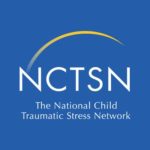Safety
The State of California and CSBA (California School Boards Association) has created a dedicated website to immigration-related resources for school districts and personnel. Included in these resources are quick guides for school officials, student family checklists, and the Bureau of Children’s Justice Resource Page as well as other relative resources to supporting children and youth in the education system.
Bark offers free resources to support caregivers navigate the digital divide with their youth, including app reviews and tech guides.
Together, The National Child Traumatic Stress Network (NCTSN) and The National Center for Posttraumatic Stress Disorder (PTSD) offer the Psychological First Aid (PFA) for Schools: Field Operations Guide as a resource for educators and educational professionals. This guide offers the PFA core actions which include contact and engagement; safety and comfort; stabilization; information gathering; practical assistance; connection with social supports; information on coping; and linkage with collaborative services.
This resource provided by the ACLU gives guidance to knowing your rights when questioned by law enforcement agencies and authorities. A copy of “My Rights Card” is available in this resource for use if needed. This resource is prepared in Spanish.
This resource provided by the ACLU gives guidance to knowing your rights when questioned by law enforcement agencies and authorities. A copy of “My Rights Card” is available in this resource for use if needed. This resource is prepared in English.
The GIANT Room in collaboration with Lysol® has created a free digital-resource series of Minilab Science Kits accessible to educators, co-designed by teachers, families, and students. The HERE for Healthy Schools program is intended to promote healthy learning about microbes and germs to reduce school absenteeism.
Activities are designed for children in grades 1 and 2.
The National Center for School Safety offers toolkits and guides that are detailed resources that provide you with the research, best practices, and frameworks you need to effectively administer school safety initiatives. These include creating comprehensive school safety plans, threat assessments, mental health, school climate, and more resources.
The National School Safety Center, state governors, and state school superintendents sponsor America’s Safe Schools Week annually in October.
School safety includes keeping campuses free of crime and violence, improving discipline, and increasing student attendance. Schools that are safe and free of violence, weapons, and drugs are necessary to ensure the well-being of all children and the quality of their education.
The most important strategy is to place school safety on the educational agenda. This includes developing a safe schools plan – an ongoing process that encompasses the development of district-wide crime prevention policies, in-service training, crisis preparation, interagency cooperation, and student/parent participation. These ideas are primary strategies to help inform, persuade, and integrate school safety and public opinion. These ideas will facilitate planning and the implementation of the remaining strategies.
Our mission is to build youth power in marginalized communities throughout the nation and encourage legislative advocacy to prevent gun violence, while shifting public discourse towards an evidentiary approach to keeping schools and communities safe.
There are many reactions that are common after mass violence. These generally diminish with time, but knowing about them can help you to be supportive, both of yourself and your students.
Ideal interventions promote the evidence-based principles of Psychological First Aid (PFA), including: safety calming, self- and community-efficacy, social connectedness, and a sense of hope/optimism. Information relevant to this event and links to brief, easy to read, action-oriented education fact sheets are provided in the link below.
It is important to manage our response to mass shootings so we are able to care for ourselves, our families, and our communities. Here are steps to help people cope more effectively with stress after a mass shooting.





